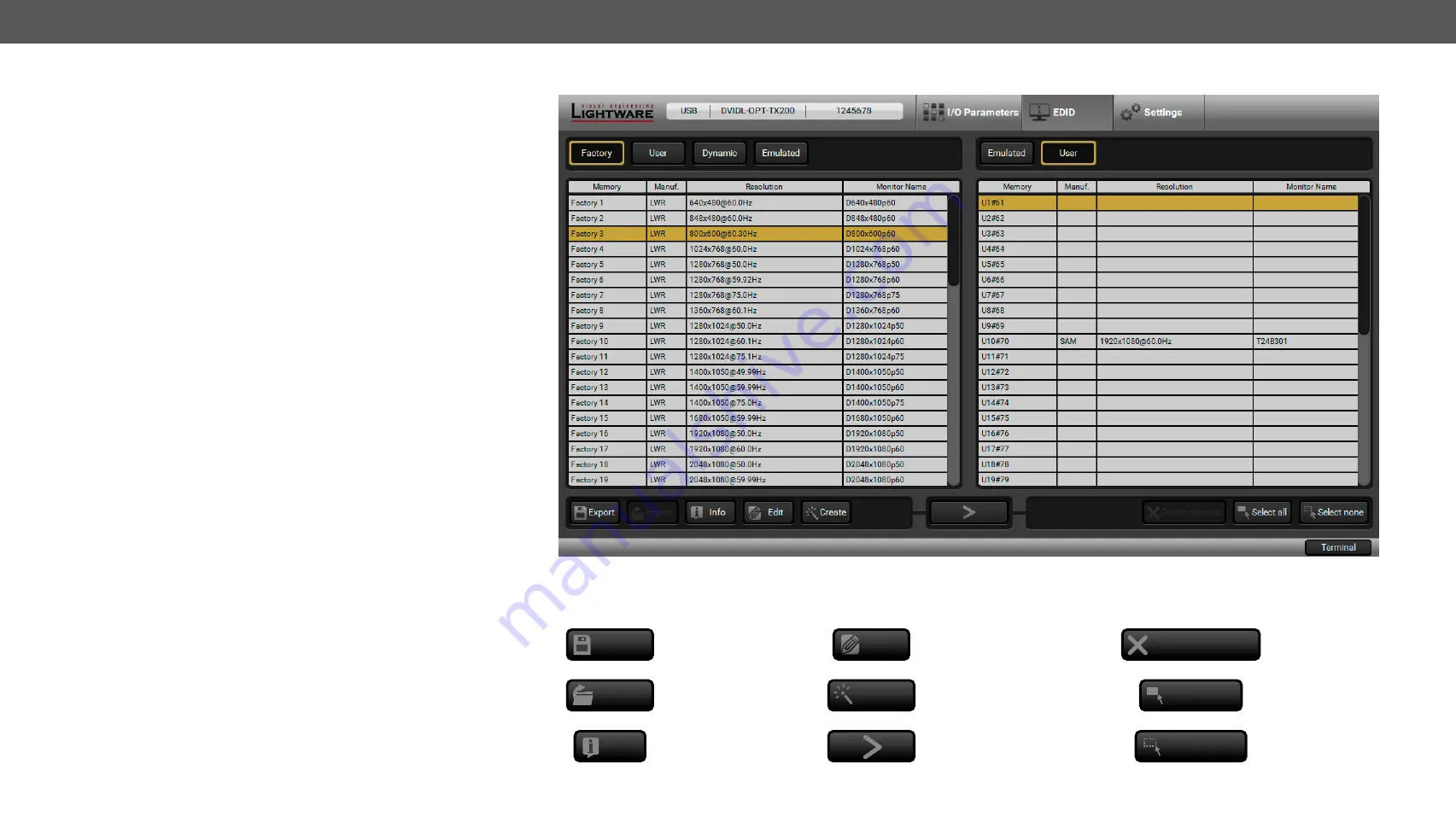
5. Software Control – Lightware Device Controller
DVIDL-OPT series – User's Manual
17
5.5.
The EDID Menu
The Advanced EDID Management is available in the EDID menu. There
are two panels: left one contains Source EDIDs, right one contains
Destination places where the EDIDs can be emulated or copied.
Sources and Destinations
▪
Factory EDID
list shows the pre-programmed EDIDs (F1-F50).
▪
Dynamic EDID
list shows the display device connected to the
device's outputs. The unit stores the last display devices’ EDID
on either output, so there is an EDID shown even if there is no
display device attached to the output port at the moment.
▪
User memory
locations (U1 – U50) can be used to save custom
EDIDs.
▪
Emulated EDID
list shows the currently emulated EDID for the
inputs. The source column displays the memory location that
the current EDID was routed from.
The source reads the EDID from the Emulated EDID memory on the
INPUT port. Any EDID from any of the User/Factory/Dynamic EDID
lists can be copied to the user memory.
EDID Emulation Types
▪
Static EDID emulation
: an EDID from the Factory or User EDID list
is selected. Thus, the Emulated EDID remains the same until the
user em0ulates another EDID.
▪
Dynamic EDID emulation:
it can be enabled by selecting a slot
from the Input 1..Input 16 EDID memory. The attached monitor’s
EDID is copied to the input; if a new monitor is attached to the
output, the emulated EDID changes automatically.
EDID menu
Control Buttons
Export
Exporting an EDID
(save to a file)
Edit
Opening the Advanced EDID
Editor with the selected EDID
Delete selected
Deleting an EDID
(from the User memory)
Import
Importing an EDID
(load from a file)
Create
Opening Easy EDID Creator
Select All
Selecting all memory
places in the right panel
Info
Displaying the EDID
Summary window
Executing EDID emulation or
copying (Transfer button)
Select none
Selecting none of the
memory places in the
right panel






























